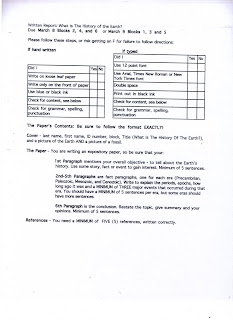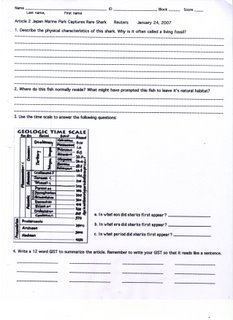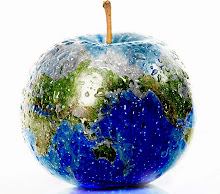Here, you will find the notes, ammended as we read more, for the novel A Journey To The Center of The Earth. For those students who would rather read for themselves, the book can be read online by viewing the following site:
http://jv.gilead.org.il/vt/c_earth
Remember, this is the book itself, and not the Wishbone classic.
Notes will include page, description of even, fact or fiction in that order.
Chapter One - The Mysterious Note
page 14, geology is the science that deals with how the earth was formed and what it’s made of, fact
page 14, Axel and Professor Lidenbrock, are geologists, who analyze different types of rocks.
Chapter Three - Horrifying First Steps
page 27, The Theory of Central Heat states that the center of the earth is extremely hot, which scientists know as they observed that lava from volcanoes is boiling hot.
page 27, according to Professor Lidenbrock, lava is hot because of friction created as it rubs against the rocks, fiction, since liquids do not create friction.
Chapter Four - All Our Ducks in a Row
page 36, the trio take several scientific instruments with them, including a thermometer to measure temperature, a clock to measure time, a compass to show direction, a chronometer to determine distance, and a barometer to measure air pressure, determine height above sea level and changes in the weather, fact
page 36, Ruhmkorf’s coils provide light, fiction because during the time this book was written, portable light sources such as flashlights had not yet been invented.
Chapter Five - Approaching the Giant
page 38, lava hardened to form solid, sturdy rock surrounding Mount Sneffels, fact, because lava does harden to become igneous rock
page 39, Axel and company saw geysers, or streams of hot water and steam that shot into the air from the ground, fact
page 39, Axel found at at 10:00 pm, it was still light outside because summer days are long, fact, since during summer months, the earth is tilted towards the sun for the north polar regions and they have very long days for most of the winter.
Chapter Six - The Shadow Knows
page 42, stones broke under the trio’s feet as they climbed the mountain, fact, as mechanical weathering breaks rocks
page 43, rocks caused valances, fact, as falling rocks are carried away (eroded) by gravity
page 43, the trio encountered a mistour, or Islandic tornado, a whirlwind of rock, sand and dust that tore away the side of the mountain, fact, since wind can cause erosion
page 45, Axel observed glaciers, huge masses of ice that reached across rows of mountaintops while standing at the top of Mount Sneffels, fact, since glaciers are large masses of ice and snow found in northern regions of the earth.
Chapter Seven - Down to Business
page 53, lava formed rocks of many colors that lined the corridors of the cavern of the volcano. This is due to all the elements contained in the lava that hardened into rock, fact
page 53, lava stuck out like long fingers, fact, as stalagmites form when materials drip and form columns from the ground up. Stalactites form on the ceilings when minerals and calcium deposits drip down to form columns on the ceiling.
Chapter Eight - Which Way Is Down?
page 56, Axel found sedimentary rock, made from sands that had hardened over the ages, which proved that thousands of years ago, that layer of rock in the tunnel must have been the floor of a sea, fact, since sedimentary rocks form from sediments in layers in water.
page 56, Axel found tiny shells pressed into the rock that must have been the homes of ancient sea animals, fact, since sedimentary rock containing shells and shell fragments are called coquina or shell limestone.
page 56, Axel notices that the layers they are traveling through seem to be younger than the ones they’d already been through, this is fact, since the Law of Superposition states, that older layers are located below younger layers since they formed before the younger layers.
page 57, Axel found the remains of crab like sea creatures in the rock, fact
page 57, Axel found a cavern whose walls had coal, formed form the remains of ancient plants and animals millions of years ago when the earth was warm and moist.
Chapter Nine - Not a Drop!
page 63, Axel and companions traveled through tunnels that were made of granite, a very strong rock, fact, since granite is a type of igneous rock that forms when lava cools slowly to form large crystal containing rock.
Chapter Ten - Moving in Silence
page 70, Professor Lidenbrock notes that the temperature is cool and comfortable, even though they are fifty miles below the earth’s surface, fiction, since the upper mantle should have a temperature over 2000 degrees Celsius.
Chapter 11 - Lost!
page 74, a fossil is a trace a creature or plant left from long ago, including bones and imprints of ancient plants left in rocks, fact, since hard parts such as bones and teeth form fossils and imprints of plants or tracts form fossils.



























